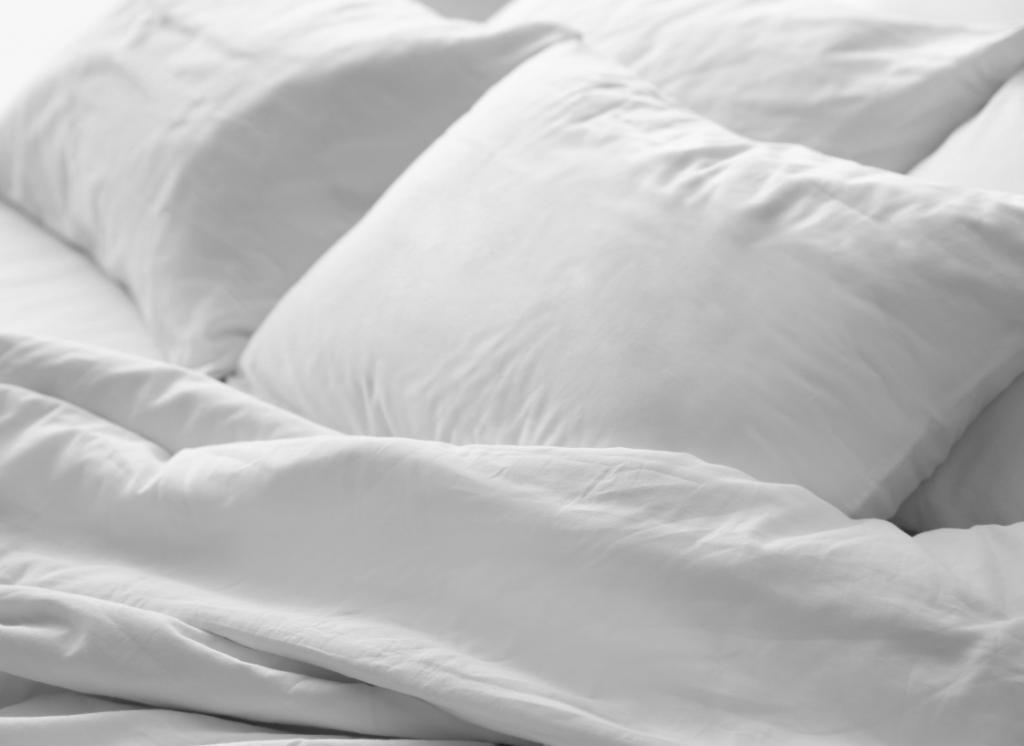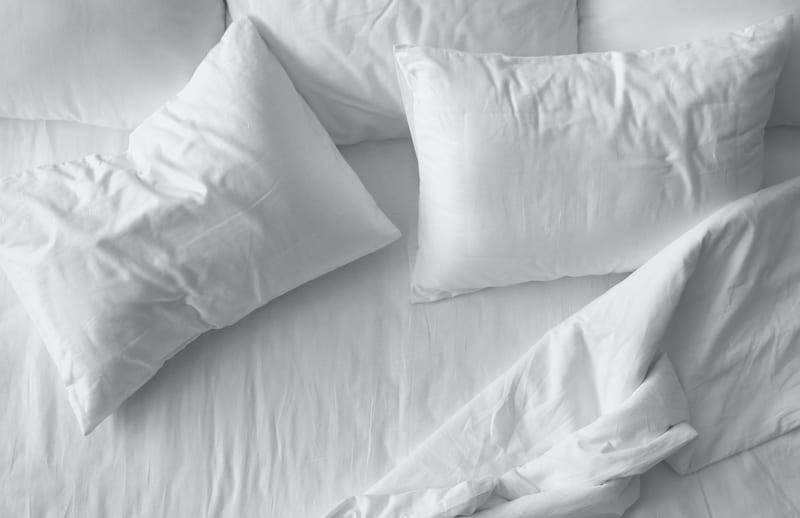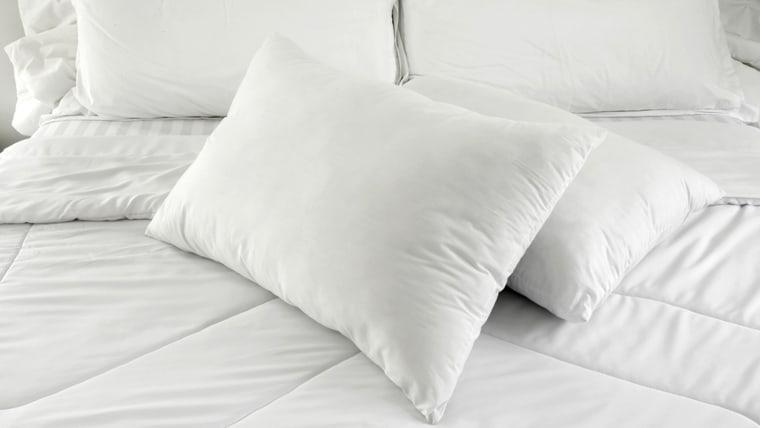The importance of a good night’s sleep for one’s physical and mental well-being has been well documented. You can get a better night’s sleep by improving your bedroom and bedding. In order to ensure that your pillow offers you with the right amount of support, you should clean and replace it as needed.
Additionally, it is important to keep an eye on the quality and cleanliness of your pillow because you spend a lot of time sleeping on it. Allergies, rashes, and neck pain can all result from not changing your pillows on a regular basis. We’ll talk about how to take care of your pillow and when to replace it.
How Often Should You Replace Your Pillows?
Replace your pillow every year to two years, according to the majority of specialists. By doing this, you can be confident that the pillows you’re sleeping with are firm, clean, and free of allergies. To make sure your pillows last as long as possible, make sure you take good care of them.

Your pillows will usually warn you when it’s time for a new one to arrive. The support your pillow once provided may not be enough if you’re having trouble falling or staying asleep or your neck hurts when you wake up in the morning. Pillows should be replaced when they begin to sag or develop lumps, just like a mattress. If you detect excessive yellowing or if your allergies are acting up at night, it may be time to invest in new pillows.
Pillows made of certain materials are more durable than others. A polyester pillow, for example, may only last one year while a latex pillow may last up to three. The quality and density of the foams, as well as the type of material used, can all have an impact. For the most part, if you get a high-quality pillow, you won’t have to buy another one as often.
To extend the life of your pillow and keep it clean, use a clean pillowcase and pillow. Pillowcases should be washed with your sheets on a regular basis, and many pillows may be machine washed and dried.
Why it’s Important to Replace Pillows
Pillows that are past their prime can cause allergic responses, acne breakouts, and sore muscles. Replacing them periodically may seem like a burden.
There are a number of allergies that can build up in an old pillow such dust mites and pet dander. Sleeping with such allergens can result in a stuffy nose, itchy skin, and irritated eyes for some people, all of which can have an effect on how well they sleep. You may be able to prevent pillow-related allergies by changing your pillows frequently or purchasing a pillow that is antibacterial and breathable.
Sweat, drool, and other bodily fluids can seep through your pillowcases and leave yellow stains on your pillows. People with sensitive skin may get breakouts of acne or rashes as a result of these substances clogging their pores. Pillowcases and pillows should be washed frequently with a gentle detergent to remove buildup, and new pillows can provide a clean slate that doesn’t irritate the skin.
Most importantly, pillows are designed to alleviate muscle tension and promote proper spinal alignment as you sleep. If your pillow has sagged or flattened over time, you may wake up feeling sore or unrefreshed because it is unable to provide the support you need. A flattened pillow can also cause aching shoulders for those who sleep on their sides. Your pillow may need to be replaced if it isn’t providing the support it once did. You can only get so far by fluffing or folding it.
Replacement Reason #1: Pillows Can Get Pretty Dirty
In the course of sleeping, our dead skin cells’ oils and detritus become embedded in our pillows and bed sheets. Dirty pillows can pose numerous health risks, including the risk of infection.
- Bacteria that cause disease
- Dust mites are a common cause of allergic reactions.
- Itchy, acne-inducing oils and perspiration
The filth that accumulates on your pillow over time isn’t enough to warrant a whole pillow replacement. Consider the pillow case when determining how often you should change your pillows. The best way to care for your pillow is to wash it every one to two weeks (or more frequently if you have a tendency to perspire as you sleep). In terms of the pillow, what can I say? Every three months, you should clean that.

Casper’s Original Pillow is completely machine washable. Various materials may necessitate different methods of upkeep for other types of pillows. Spot cleaning a memory foam cushion, for example, is preferable to washing it in the washing machine. You may check out our guide on how to wash pillows for additional information on how to clean your pillows.
Even if washing your pillows is good for your health, just how filthy do they have to be before you should consider replacing them?
Many variables come into play, including the quantity of pillows you use at night. It’s possible to sleep with two pillows, one on top and one behind your head, which exposes it to more germs and stains than one on top.
It may be time to look for a new one if you observe any of the following warning signs:
- Stains
- Smells
- Allergy symptoms have gotten worse.
- Itchy, red bumps on the cheeks
It’s time to get a new pillow if your old one doesn’t seem fresh anymore (even after a good wash).
Replacement Reason #2: Your Pillow Has Lost Its Shape
Our pillows lose their shape over time. If you sleep with your pillows folded, bent, or squeezed, you’re doing yourself a disservice. Eventually, you may realize that your favorite pillow doesn’t rebound the way it used to.
If you’re using a low-quality pillow, especially a synthetic one, this issue can arise rapidly. The following are some of the telltale indicators of a worn-out, misaligned pillow:
- Having a bumpy pillow is bad for your sleep. If your pillow’s filling has started to bunch up in unusual ways, it’s time to retire it. A pillow that has lost all its plumpness is a pillow that should be thrown away, rather than used.
- Over time, pillows flatten down, resulting in a loss of support. You may wake up in the morning with a hurting neck if you sleep on a flat pillow. If your pillow is starting to resemble a plywood board instead of a cloud, it’s time to get a new one (your neck will thank you later).
To summarize, a pillow’s surface should be soft, fluffy, and thick. It’s time for a new pillow if there are lumps, bumps, or a lack of support.
Replacement Reason #3: Your Pillow Just Isn’t Comfy Anymore
To help you go off to sleep, your pillow is there to support and comfort you. Any cushion that’s no longer serving its intended purpose shouldn’t be kept around, regardless of how long the experts say they think they can endure.
It’s possible that a lack of comfort stems from a multitude of causes. Dirt and lumps aren’t the sole causes of a bad night’s sleep, but they’re not the only culprits. Your old pillow may need to be replaced for one of the following reasons:
- Bodily changes – Our bodies are constantly changing. If you’ve had an injury or a change in your lifestyle, a pillow that worked for you before may no longer be enough. As we get older, our necks need more support in bed, so it’s a good idea to swap out your pillow every few months to guarantee you enjoy a better night’s sleep.
- In the event that you recently purchased a new bed, you may require a pillow that provides additional support for your head, neck, and shoulders.
Our bodies are continually undergoing changes. Pillows that formerly worked for you may no longer do so, whether due to an injury or a shift in your lifestyle. When it comes to getting a good night’s sleep, some people require a little extra support for their necks, especially as they become older.
Pillow Care and Replacement Guidelines
Regular cleaning and care are necessary to extend the life of a cushion. Care instructions and longevity can be affected by the materials used in a pillow, therefore it is critical that you pay attention to the type of pillow you purchase and follow the care recommendations provided by the manufacturer.
Myofascial Flow
Using a washing machine or dryer to wash a memory foam pillow is a bad idea. The best way to clean this cushion is to simply spot clean it when it needs to be. You can wash the pillow by hand every two months with a light detergent and let it air dry. Every two to three years, it’s a good idea to change your memory foam pillows.
Polyfoam
A moderate detergent and air drying is all that is required to clean polyfoam pillows, just as memory foam pillows, which may be spot cleaned and hand washed every two to three months. Pillows made of polyfoam typically last two to three years before they need to be changed.
Down/Feather
It is possible to machine wash most down and feather pillows; however, some require dry cleaning. Use a moderate cycle, warm water, and a mild detergent when washing a down or feather pillow in the machine. Rinsing more than once may be necessary to remove all of the detergent. You may either let the pillows air dry or use a low-heat dryer for about 20 minutes to dry them. Every 3 to 6 months, you should wash and replace these pillows. If the pillow doesn’t return to its original shape after you fold it in half, it’s time for a new one.
Alternatives to Polyester and Down
Pillows made of down replacement or polyester can be machine cleaned in cold water and a light detergent on the gentle cycle, then dried on the low setting in the dryer. Do this every three to six months. One to two years is the average lifespan of down alternative pillows. It is recommended that polyester pillows be replaced every six months to two years because they are among the least durable.
Latex
Avoid using a washing machine to clean latex cushions. Using warm water and a light detergent, you can spot clean stains and hand wash the pillow every two to three months. Neither submerge nor wring out the pillow. Let it air out by laying it flat. Latex pillows should be replaced every two to four years.
Buckwheat
Buckwheat pillows can be damaged by moisture, so use a washable, detachable cover to keep yours in good condition. In the event of an unintentional spill, the buckwheat hulls can be dried in the sun by opening the buckwheat pillows. The hulls of buckwheat can also be replaced every three years to keep your pillow fresh and new.
Pillowcases
At the very least, wash your pillowcases once a week. Check the manufacturer’s label for specific care instructions for each type of material.. Pillowcases should be replaced every one to two years.
FAQs
What type of pillow lasts the longest?
When compared to other types of pillows, such down or bamboo, latex pillows often last longer. Dunlop latex, on the other hand, is the most long-lasting type of latex due to its composition of pure latex serum. Although other pillow varieties lose their structural integrity over time, latex pillows retain their integrity for longer periods of time. Pillows constructed from Dunlop latex are excellent choices if you want a long-lasting pillow.

How can you tell a quality pillow?
Pillow shopping for a decent pillow might be tough, but a smart place to start is by looking at the material used. When it comes to pillows, natural latex and down can both be excellent options, but they are constructed of completely different materials, which explains why one lasts longer. It’s a positive sign if the pillow has a warranty, as well. It is rare for a corporation to offer a warranty unless it is confident in the quality of its goods. Choose a pillow that has a solid warranty and durable materials if you want to get a good night’s sleep on it.
Is it good to sleep without a pillow?
When you’re sleeping on your stomach, you don’t need a pillow. Stomach sleeping, on the other hand, is not a healthy or even acceptable sleeping position. As a result, resting flat on your back without a pillow is harmful and can lead to neck problems. Without a pillow, you have nothing to support your head and neck as you sleep. It’s true that a pillowless night may be more comfortable at first, but in the long run, it’s going to cause a lot of discomfort.
Is it better to have 1 or 2 pillows?
Even if you’d prefer to sleep with a slew of pillows under your head, you should only use one of them. You need a pillow that is thick and sturdy enough to keep your neck in a healthy position and prevent pain. Other types of pillows, such as body, knee, or wedge pillows, can help certain people maintain optimal sleeping positions in addition to traditional pillow for the head. Body and knee pillows placed between your legs, especially if you’re a side sleeper, can help keep your upper leg from dragging your spine out of alignment, reducing stress on your back and hips.. If you sleep on your back, a wedge pillow can help you maintain an incline as you sleep, improving your airflow and even reducing snoring.
Why do old pillows turn yellow?
The most prevalent cause of yellow pillows is a buildup of perspiration. Sweat can leak through your pillowcase on a regular basis, and when it dries, it leaves a yellow stain. This can happen even when you use a cushion in between your pillow and the cover of your pillowcase. It’s time to replace your pillows if you notice yellow stains on them.
Conclusion
Replacing pillows is a necessary but dreaded chore. That doesn’t mean it shouldn’t be done, though. When purchasing a new pillow, take the time to look for a high-quality, long-lasting option. It’s imperative that you maintain a pillow that’s both comfy and supportive once you’ve purchased one. To keep your pillows fresh and clean, wash them every few months and always use a pillowcase. However, you should keep in mind that a pillow that is old and lumpy is no longer beneficial to you or your night’s sleep. To get a better night’s sleep, better health, and a better night’s hygiene, switch out your pillows as needed.
What do you think of this article?

![Top Rated CPAP Machine Buyer’s Guide [current_date format=’m/Y’]](https://bestpillowsleepers.com/wp-content/uploads/2023/03/best-cpap-machine-img_6405d72310053-400x300.jpg)
![The 11 Best Cooling Weighted Blankets [current_date format=’m/Y’]](https://bestpillowsleepers.com/wp-content/uploads/2023/01/best-cooling-weighted-blankets-img_63d4ff15c615d-400x300.jpg)
![Ultimate Guide to Choosing a Best Cooling Mattress Pads [current_date format=’m/Y’]](https://bestpillowsleepers.com/wp-content/uploads/2023/01/best-cooling-mattress-pads-img_63c403115126b-400x300.jpg)
![Ultimate Guide to Choosing a Best Cooling Mattress [current_date format=’m/Y’]](https://bestpillowsleepers.com/wp-content/uploads/2023/01/ultimate-guide-to-choosing-a-best-cooling-mattress-img_63bcdba870d77-400x300.jpg)
![Ultimate Guide to Choosing a Best Cooling Comforters [current_date format=’m/Y’]](https://bestpillowsleepers.com/wp-content/uploads/2023/01/ultimate-guide-to-choosing-a-best-cooling-comforters-img_63bba2f5cd3ce-400x300.jpg)